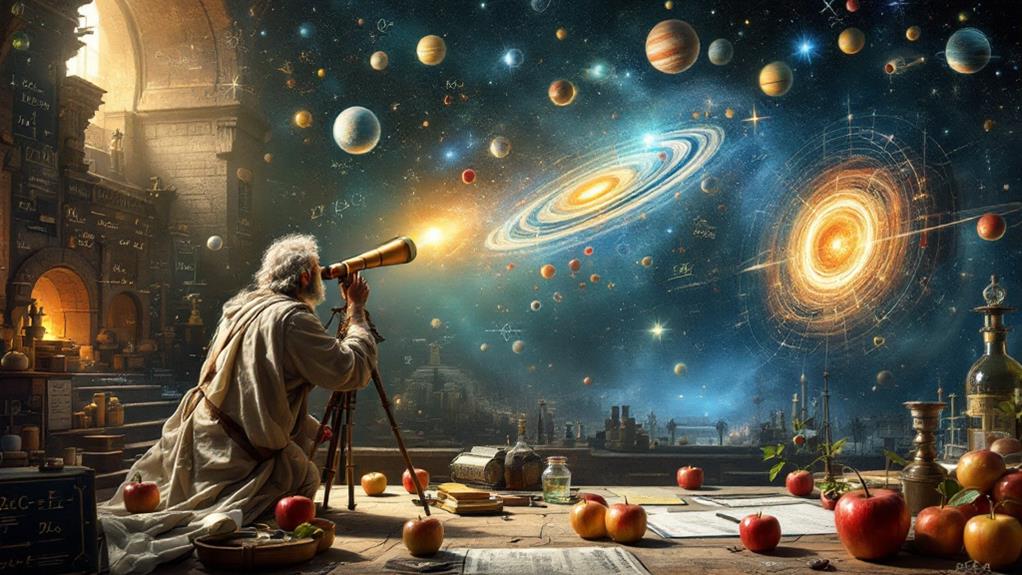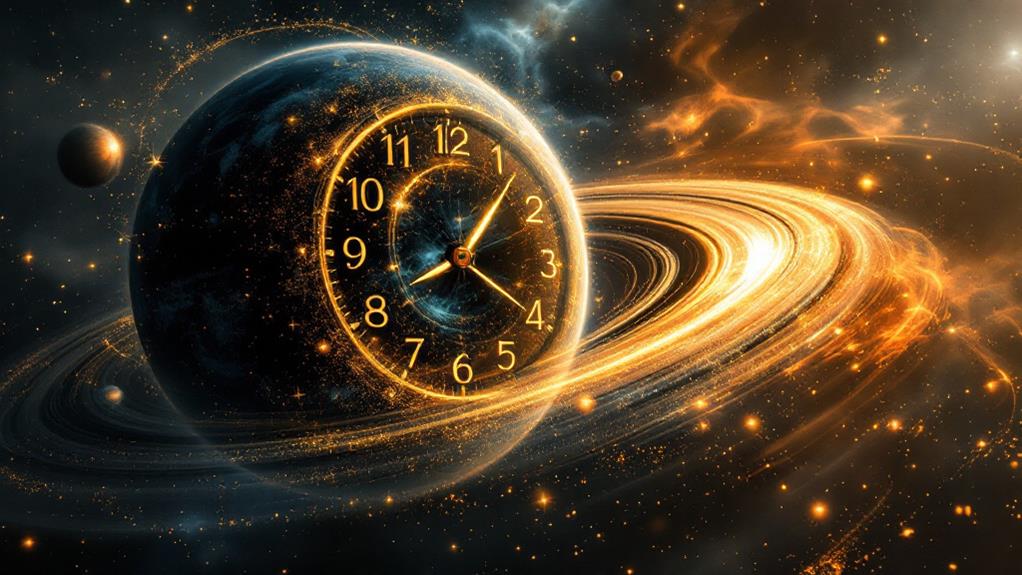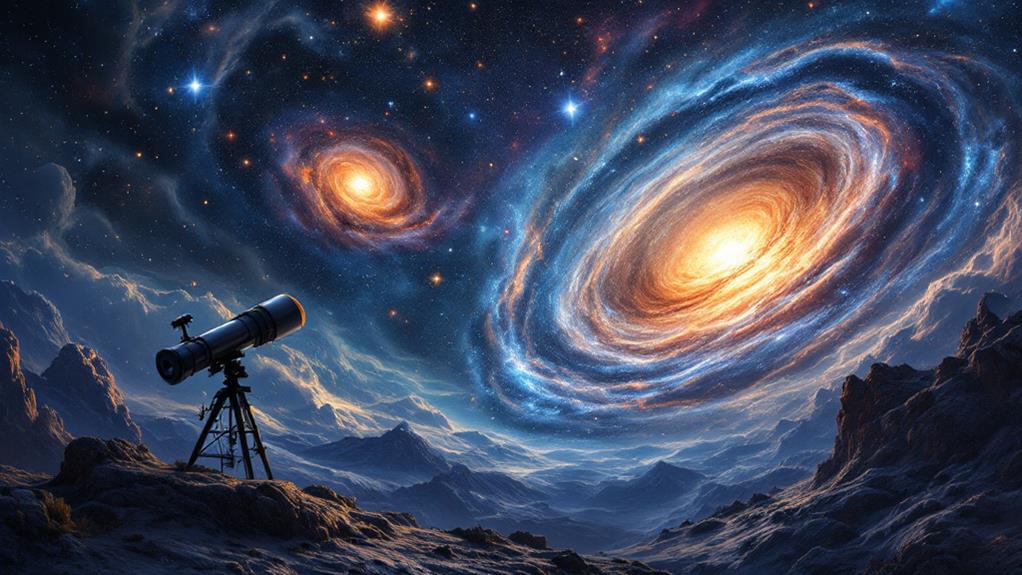The History of Physics: Exploring the Laws That Govern the Universe

The history of physics spans millennia, from ancient Greek natural philosophy to today's pioneering research. You'll investigate how early thinkers like Aristotle and Pythagoras laid the groundwork for scientific inquiry. The Scientific Revolution brought a shift in perspective, with figures like Copernicus and Newton reshaping our understanding of the cosmos. Classical mechanics gave way to thermodynamics and electromagnetism, while the 20th century saw the birth of relativity and quantum mechanics. Modern physics delves into particle physics, astrophysics, and cosmology, pushing the boundaries of human knowledge. As you navigate this captivating expedition, you'll uncover the universe's deepest secrets.
Ancient Greek Natural Philosophy
From the early days of Western civilization, Ancient Greek natural philosophers laid the groundwork for what would become modern physics. You can trace the roots of scientific inquiry back to these thinkers who sought to understand the natural world through reason and observation.
Aristotelian cosmology dominated scientific thought for centuries. It proposed a geocentric model of the universe, with Earth at the center surrounded by concentric spheres containing celestial bodies. This framework, while inaccurate, encouraged systematic observation of the heavens and laid the foundation for future astronomical studies.
Pythagorean numerology, another influential concept, emphasized the importance of mathematics in explaining natural phenomena. The Pythagoreans believed that numbers were the fundamental building blocks of reality, an idea that still reverberates in modern physics equations.
Other Greek philosophers contributed substantially to early physics. Democritus proposed the concept of atoms, indivisible particles that make up all matter. Archimedes made pathbreaking discoveries in mechanics and fluid dynamics. These ancient thinkers' work, while often speculative, set the stage for the scientific revolution that would follow centuries later, shaping the way you understand the physical world today.
The Scientific Revolution
A seismic shift in scientific thinking erupted during the 16th and 17th centuries, known as the Scientific Revolution. You'll find this period marked by a dramatic departure from ancient Greek and medieval philosophies. Scientists began to challenge long-held beliefs, embracing observation and experimentation as the cornerstones of knowledge acquisition.
Nicolaus Copernicus's heliocentric model, placing the sun at the center of the solar system, revolutionized astronomy. This bold theory, further developed by Johannes Kepler and Galileo Galilei, shattered the geocentric worldview that had persisted for centuries.
The experimental method, championed by Francis Bacon, emphasized empirical evidence and systematic observation. This approach laid the foundation for modern scientific inquiry. Isaac Newton's pioneering work in mechanics and optics exemplified this new methodology, synthesizing theoretical principles with rigorous experimentation.
During this era, you'd witness the birth of scientific institutions like the Royal Society, promoting collaboration and the dissemination of new ideas. The Scientific Revolution not only transformed our understanding of the natural world but also established the structure for modern physics, opening the door for centuries of scientific progress to come.
Classical Mechanics

The foundation of modern physics rests squarely on classical mechanics. This branch of physics, developed in the late 17th and early 18th centuries, describes the motion of macroscopic objects under the influence of forces. At its core lies Newtonian mechanics, named after Sir Isaac Newton, who formulated the three laws of motion and the law of universal gravitation.
You'll find that classical mechanics provides a structure for understanding everything from the orbit of planets to the path of a baseball. It's based on the principles of determinism and reversibility, meaning that if you know the initial conditions of a system, you can predict its future state with certainty.
One of the strengths of classical mechanics is its experimental verification. Countless observations and experiments have confirmed its predictions, making it a cornerstone of engineering and applied physics. However, it's crucial to acknowledge that classical mechanics breaks down at very small scales (quantum mechanics) and very high speeds (special relativity). Despite these limitations, it remains an essential tool for understanding and manipulating the physical world around us.
Thermodynamics and Electromagnetism
How did physics evolve beyond classical mechanics? The 19th century saw the emergence of two revolutionary fields: thermodynamics and electromagnetism. These disciplines expanded our understanding of energy, heat, and electromagnetic phenomena.
Thermodynamics arose from the study of heat engines and industrial processes. Scientists like Sadi Carnot and Rudolf Clausius investigated heat transfer and thermal efficiency, leading to the formulation of the laws of thermodynamics. These principles explain how energy behaves in physical systems and set limits on the efficiency of heat engines.
Electromagnetism united the previously separate fields of electricity and magnetism. Hans Christian Oersted's finding that electric currents produce magnetic fields sparked a wave of research. Michael Faraday's experiments on electromagnetic induction and James Clerk Maxwell's mathematical formulation of electromagnetic theory were crucial. Maxwell's equations described the behavior of electric and magnetic fields, predicting the existence of electromagnetic waves.
These advancements laid the foundation for modern technology, from power generation to telecommunications. They also challenged classical mechanics, establishing the path for the revolutionary theories of relativity and quantum mechanics in the early 20th century.
Relativity and Quantum Mechanics

While thermodynamics and electromagnetism revolutionized 19th-century physics, the early 20th century brought even more radical changes. Albert Einstein's theory of relativity and the emergence of quantum mechanics shattered classical notions of space, time, and causality.
Einstein's special relativity (1905) showed that time and space are interconnected, leading to his famous equation E=mc². His general relativity (1915) explained gravity as spacetime curvature, revolutionizing our understanding of the cosmos. These theories dramatically altered our perception of the universe and laid the groundwork for modern cosmology.
Simultaneously, quantum mechanics emerged to explain atomic and subatomic phenomena. Planck's quantum hypothesis, Bohr's atomic model, and Heisenberg's uncertainty principle challenged deterministic classical physics. The concept of wave-particle duality, demonstrated by the double-slit experiment, revealed the intricate nature of quantum entities.
You'll find that these theories have profoundly impacted technology and our daily lives. GPS systems rely on relativistic corrections, while quantum mechanics underpins modern electronics and medical imaging. As you explore deeper into physics, you'll uncover that relativity and quantum mechanics continue to shape our comprehension of the universe's fundamental laws.
Particle Physics
As physicists investigated deeper into the quantum domain, particle physics materialized as a vital field of study. You'll find that this branch of physics focuses on understanding the fundamental particles that make up all matter and the forces governing their interactions. Through high energy collisions in particle accelerators, scientists have uncovered a zoo of subatomic particles, each with its own unique properties.
The Standard Model, developed in the 1970s, serves as the cornerstone of particle physics. It categorizes all known fundamental particles and describes three of the four fundamental forces. You'll encounter particles like:
- Quarks: The building blocks of protons and neutrons
- Leptons: Including electrons and neutrinos
- Bosons: Force-carrying particles like photons and the Higgs boson
- Hadrons: Composite particles made of quarks
Despite its success, the Standard Model isn't complete. It doesn't explain gravity or dark matter, and it can't account for the universe's matter-antimatter imbalance. As you venture into particle physics, you'll uncover that these mysteries continue to drive research, pushing the boundaries of our understanding of the universe's most fundamental components.
Astrophysics and Cosmology

Astrophysics and cosmology, two intertwined fields, investigate the universe's vast expanse and its fundamental nature. These disciplines have revolutionized our understanding of space, time, and the cosmic structures that surround us.
You'll find that astrophysics focuses on the physical properties and processes of celestial objects. It encompasses the study of stars, galaxies, and phenomena like supernovae and neutron stars. Cosmology, on the other hand, deals with the origin, evolution, and large-scale structure of the universe as a whole.
In recent decades, these fields have made pioneering discoveries. The detection of gravitational waves has opened up a new way to observe the cosmos, while the concept of dark matter has challenged our understanding of the universe's composition. Gravitational lensing has allowed scientists to observe distant galaxies and map dark matter distribution.
One of the most fascinating areas of study is supermassive black holes. These cosmic behemoths, found at the centers of galaxies, have become pivotal to our understanding of galactic evolution and the nature of spacetime itself. As you explore deeper into astrophysics and cosmology, you'll uncover a universe more mysterious and awe-inspiring than ever before.
Modern Frontiers in Physics
Frontiers in modern physics continue to extend the boundaries of our understanding. Today, you'll find researchers exploring domains that were once thought to be purely theoretical. String theory, for instance, proposes that the fundamental constituents of the universe are tiny, vibrating strings of energy. This sophisticated concept aims to unify quantum mechanics and general relativity, potentially resolving long-standing conflicts between these theories.
Quantum computing represents another state-of-the-art field, promising to revolutionize information processing. By harnessing the principles of quantum mechanics, these computers could solve complex problems exponentially faster than classical computers.
Other exciting areas of modern physics include:
- Dark matter and dark energy research
- Gravitational wave astronomy
- Quantum interconnectedness and teleportation
- Advanced particle physics experiments
As you immerse yourself into these modern frontiers, you'll encounter mind-bending concepts that challenge your intuition about the nature of reality. From the infinitesimally small to the cosmic scale, physicists are pushing the limits of human knowledge, disentangling the mysteries of the universe, and laying the groundwork for technological breakthroughs that could reshape our world.



